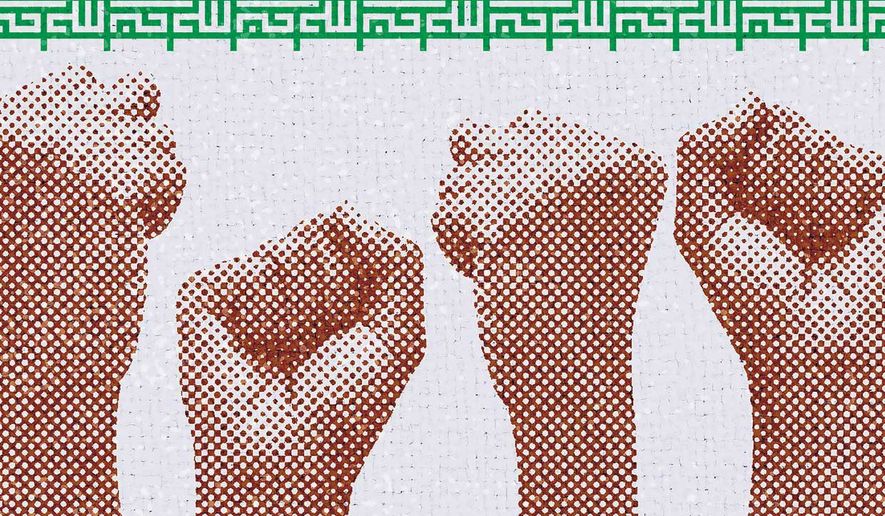OPINION:
Teacher activists in the Islamic Republic of Iran seem poised to continue their public demonstrations and civil disobedience into the New Year. Between Dec. 9 and 11, activists staged nationwide sit-ins and rallies to protest poverty-level wages and demand a change in budgetary priorities of the Iranian regime, which had previously approved a more than doubling of the budget for the Islamic Revolutionary Guard Corps.
In the wake of the recent protests, the Iranian parliament passed a slight increase in teacher salaries. Still, protest organizers promptly rejected this concession as insufficient to lift them out of poverty. The activist community also noted that Tehran’s inadequate concessions were offered only after security forces cracked down violently on the third day of protests, beating and arresting several teachers’ representatives.
A new round of protests is scheduled to begin again. If recent history is any indication, there is a very good chance teachers will be joined by supporters from various segments of Iranian society in demanding a government response to their economic hardship and comprehensive change to that government’s policies, practices and fundamental structure. One striking feature of teachers’ protests was the ubiquitous role of women who courageously played a leading role.
These protests are not merely about the failing economy. Beginning in 2018, countless demonstrators began calling for regime change. That uprising reemerged on an even larger scale, spanning nearly 200 cities and towns, in November 2019 and prompted authorities to carry out one of the worst crackdowns on dissent in decades. Approximately 1,500 peaceful protesters were killed in a matter of days, and thousands of others were tortured for months afterward.
Despite the severity of this crackdown, it was ineffective in quelling dissent. Two months after the regime put down the 2019 uprising, Iranian students and civil activists once again took to the streets in about half of the country’s provinces to condemn the downing of a Ukraine International Airlines flight by an IRGC missile. Like the nationwide uprisings, those protests also adopted slogans demanding regime change and focusing on the IRGC, which had played a leading role in the killings two months earlier.
In February 2020, the majority of the Iranian population demonstrated its ongoing commitment to challenging the regime and advocating for institutional change when it boycotted the parliamentary elections, which served as a tool for Supreme Leader Ali Khamenei to continue consolidating power in the hands of hardliners and loyalists. That process continued in June 2021 with the presidential election that brought Ebrahim Raisi to power as the regime’s second-highest official. But the Iranian people undermined his claims to legitimacy by sitting out that election too, and in even greater numbers.
Soon after Mr. Raisi was confirmed as the next president of the Islamic Republic, a democratic coalition called the National Council of Resistance of Iran hosted an international conference and rally to discuss the future of its homeland and the prospect for a change of government. In it, NCRI President-elect Maryam Rajavi predicted that the “new era” of Mr. Raisi’s leadership would be defined by an unprecedented increase in “hostility and enmity between the Iranian regime and society.”
The ongoing teacher protests are only one example of this prediction being accurate. It was preceded last month by mass protests among farmers in Isfahan, which in turn sparked much broader protests when clashes with security forces led to a number of those farmers being blinded or otherwise wounded. This sort of mutual support among different activist populations has proven to be typical in the wake of the nationwide uprisings. It contributes to the likelihood of each new protest absorbing the message of those uprisings and morphing into a renewed push for regime change.
Unfortunately, even as the popularity of that message has been demonstrated, again and again, the Iranian people have remained relatively isolated globally. Despite several nationwide uprisings, two electoral boycotts and countless other protests since 2018, Western policymakers still fail to heed the Iranian people by recognizing that the only clear solution to threats and crises currently emanating from Tehran is a new regime.
As the threat from the current regime in Iran continues to grow in 2022, we must hope that the West will overcome its silence. We must hope that the U.S. and its allies shake themselves free from a status quo, including a slavish commitment to a nuclear negotiating process that shows no hope of compelling the regime to change its behavior. Western policymakers must come to realize what has long been understood by Iranian activists of every stripe: It is foolish to expect the current regime to change its behavior.
Indeed, the Iranian people seek to change the regime from within, and the world must stand with them.
• Linda Chavez is a former director of the Office of Public Liaison at the White House.




Please read our comment policy before commenting.